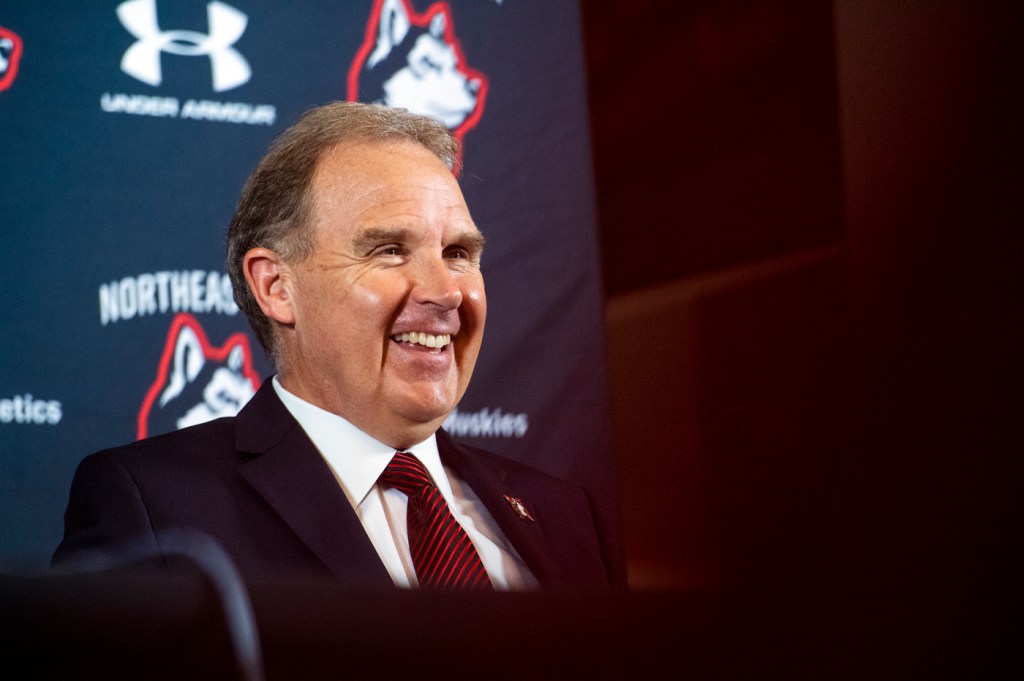Here’s why the NCAA’s new marketing rules create an ‘opportunity’ for Northeastern

New NCAA rules that enable student-athletes to profit commercially from their names, images, and likenesses offer an opportunity for Northeastern, says the university’s new athletic director, Jim Madigan.
“Here at Northeastern, we’re an entrepreneurial campus,” says Madigan, who coached the Huskies’ men’s hockey program to three successive Beanpot titles before he was named director of athletics and recreation last month. “It’s an opportunity for our student-athletes now to take advantage of some of those opportunities.”
In response to mounting legal challenges, the NCAA last week eliminated some of its long-standing rules that prevented athletes from earning money. The move gives students who compete at the Division 1 level chances to market themselves. While it is too early to commit to strategies, Madigan looks forward to approaching the new era in an entrepreneurial way.
“It’s part of the educational process,” Madigan says. “If the student-athletes want to venture into some of these opportunities, we want to make sure they do it the right way. We’re here to be supportive of them.”
Northeastern student-athletes may receive money for their names, images, and likenesses (known as NIL), according to university policies that were issued in response to the NCAA ruling. The compensation must be in line with fair market value and the money cannot come from Northeastern, its athletic department, or university employees. NIL marketing agreements cannot involve gambling, drugs, alcohol, and tobacco.
The NCAA’s NIL ruling was a temporary measure. Mark Emmert, president of the NCAA, said he was “very hopeful and optimistic” that the U.S. Congress will create federal legislation that will permanently allow student-athletes to market themselves.
“If that looks like that’s going to take too long, or maybe not occur at all,” said Emmert of his hope for federal legislation, “then we’re going to have to go in and craft our own permanent rules.”
The NCAA has long resisted opportunities to share the wealth of big-time college sports. But Madigan says that he welcomes the new rules.
“One hundred percent, and we’re approaching it that way,” says Madigan. “It’s much greater than advertising and social media. There is an educational component to this. It’s part of their development as a student and as an athlete while they’re here at Northeastern.”
Northeastern athletes may have a built-in advantage in terms of the new marketing rules because they compete in Boston, which is one of the top 10 media markets in the United States.
Madigan views sports as part of the educational experience—and NIL will emerge as another learning window for student-athletes, he says.
He begins his tenure as athletic director recognizing that Northeastern student-athletes may approach education from an entrepreneurial point of view by developing a wide array of life skills academically, athletically, and professionally via co-op.
“We look at co-op as a benefit—a value-added experience—to our student athletes, where it’s going to help launch their careers,” says Madigan. As a star hockey player with the Huskies in the 1980s, Madigan says that he served a co-op as an assistant coach at the University of Vermont that enabled him to launch his coaching career as a full-time assistant at Northeastern.
Adds Madigan: “The fact is that we get seriously focused young men and young women coming to Northeastern who understand that co-op and the experiential mission is part of how we provide education here.”
The university’s approach to NIL will fit into that context, he says.
For media inquiries, please contact media@northeastern.edu.






